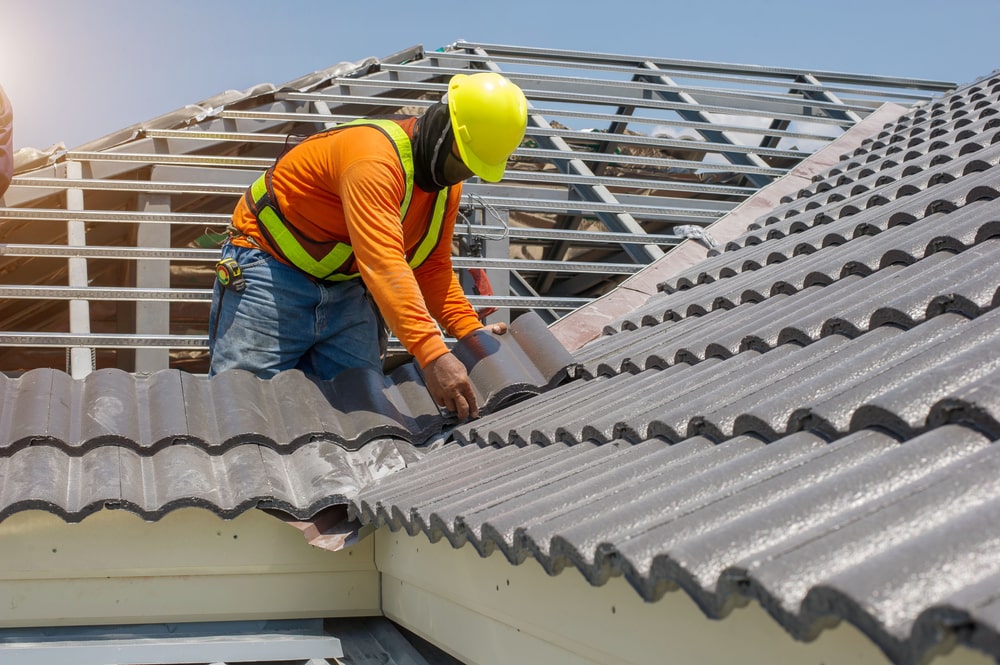Best Practices for Ensuring Correct Roof Air Flow
Guaranteeing appropriate roof covering ventilation is essential for the durability and performance of a roof. A balanced consumption and exhaust vent ratio, typically 1:300, plays an essential duty, with intake vents ideally positioned at the reduced side of the roofing for cool air entry and exhaust vents at the height for cozy air leave. Routine examinations to recognize obstructions and maintain clear air flow are extremely important. Keeping insulation away from vents is crucial to stop airflow limitation. Comprehending these foundational aspects establishes the stage for even more in-depth understandings right into installment and upkeep methods that can considerably enhance your roof system's efficiency.
Understand Ventilation Basics
Appropriately comprehending ventilation basics is important for ensuring the longevity and performance of roof covering systems. Efficient air flow reduces dampness accumulation and temperature extremes in the attic, both of which can bring about considerable structural damage over time. A well-ventilated roof assists in protecting against typical problems such as mold and mildew growth, timber rot, and ice dams, which can compromise the honesty of the roofing products and the underlying structures.
The key goal of ventilation is to facilitate the motion of air, enabling a constant exchange between the interior and outside settings. This equilibrium is achieved via a mix of consumption and exhaust vents that collaborate to maintain optimal airflow. Intake vents, usually located along the soffits or eaves, enable fresh air to go into the attic room space, while exhaust vents, frequently positioned at or near the roof covering ridge, allow hot, humid air to get away.
Trick elements affecting the effectiveness of roofing air flow consist of proper positioning, sufficient sizing, and ensuring that both intake and exhaust vents are unhampered. Regular evaluation and maintenance are essential to recognize possible obstructions, damages, or inadequacies in the ventilation system, thereby guarding the roofing system's performance and resilience.
Types of Roofing Vents
Roofing system vents play an important role in maintaining effective attic room ventilation and, by extension, the total health and wellness of the roof system. Various types of roofing system vents are readily available, each with special benefits tailored to particular roof demands.

Soffit vents are installed under the eaves and operate in tandem with roof covering vents to guarantee a balanced consumption and exhaust system. By permitting cooler air to get in from below, soffit vents help with the expulsion of warm air through top vents. Gable vents, located on the outside wall surfaces of the attic, offer one more reliable service, especially in homes with saddleback roofs.
Evaluate Your Present Air Flow

Next, consider the age and condition of your roof covering products and air flow components. Older systems might not abide by existing building regulations or might have weakened gradually, decreasing their effectiveness. Conduct a complete examination to recognize any type of indications of deterioration, such as rust, damages, or spaces that can endanger the system's efficiency.
In addition, gauge the attic temperature and moisture degrees. Heats and humidity can indicate poor ventilation - roofing companies in gainesville florida. Use a hygrometer and thermometer to acquire accurate analyses, contrasting them with exterior conditions. Consistent disparities recommend potential issues that need resolving.
Setup Best Practices
Effective installation of roof covering ventilation systems is paramount for making certain ideal performance and durability. Proper installation begins with comprehending the details air flow Resources demands of the roofing and the building it covers. This entails determining the correct ratio of intake to tire vents, typically adhering to the 1:300 rule, which stipulates one square foot of air flow for every 300 square feet of attic flooring area.

Consumption vents need to be set up at the roofing's reduced edge, frequently in the soffits, to permit awesome air to enter. Exhaust vents, on the other hand, ought to be set up near or at the roofing's peak to facilitate the exit of warm, wet air.
Seal all vent connections meticulously to avoid air leaks and potential water infiltration. Use high-grade products and comply with producer guidelines to ensure sturdiness and efficiency. In addition, integrating ridge vents with baffles can substantially enhance air flow efficiency by avoiding wind-driven rainfall and snow from entering the attic room.
Eventually, precise installment of roof covering air flow systems alleviates potential problems such as mold development, ice dams, and architectural damage, making sure the roofing's stability and the structure's overall health and wellness.
Normal Upkeep Tips
Consistency in upkeep methods is fundamental to guaranteeing the long-term performance of roof covering air flow systems. Normal inspections are essential, preferably carried out biannually-- in the spring and loss. During these inspections, make certain that vents are without particles, nests, and other obstructions that can impede air flow. Look for any type of indicators of moisture buildup or mold, as these can show inappropriate ventilation or leaks (gainesville fl roofing companies).
Make use of a soft brush or a vacuum to get rid of dust and particles from intake and exhaust vents. Be mindful not to damage the air vent screens or louvers during the process.
Correct insulation is equally important. Make certain that attic insulation does not obstruct the vents, as this can significantly restrict air flow. Reposition or change it to preserve an effective obstacle. if any type of insulation has actually shifted or resolved.
Finally, replace any damaged or missing parts without delay. Broken vents, broken roof shingles, or tatty blinking can all add to poor air flow and should be attended to without delay. Normal upkeep makes sure that the roof air flow system works optimally, thereby expanding the life expectancy of the roof covering itself.
Verdict
Making sure proper roofing ventilation is vital for maintaining the effectiveness and longevity of a roof covering system. Adherence to the 1:300 intake navigate to this website and exhaust air vent ratio, combined with the critical positioning of vents, is essential.
A balanced consumption and exhaust vent proportion, typically 1:300, plays an essential duty, with intake vents preferably placed at the lower edge of the roof covering for trendy air entry and exhaust vents at the height his explanation for cozy air departure. Intake vents, normally situated along the eaves or soffits, allow fresh air to get in the attic space, while exhaust vents, commonly situated at or near the roof covering ridge, enable hot, humid air to get away.
Soffit vents are installed under the eaves and work in tandem with roofing vents to make certain a balanced intake and exhaust system. By allowing cooler air to enter from below, soffit vents help with the expulsion of hot air with upper vents. Adherence to the 1:300 intake and exhaust vent ratio, paired with the calculated positioning of vents, is important.